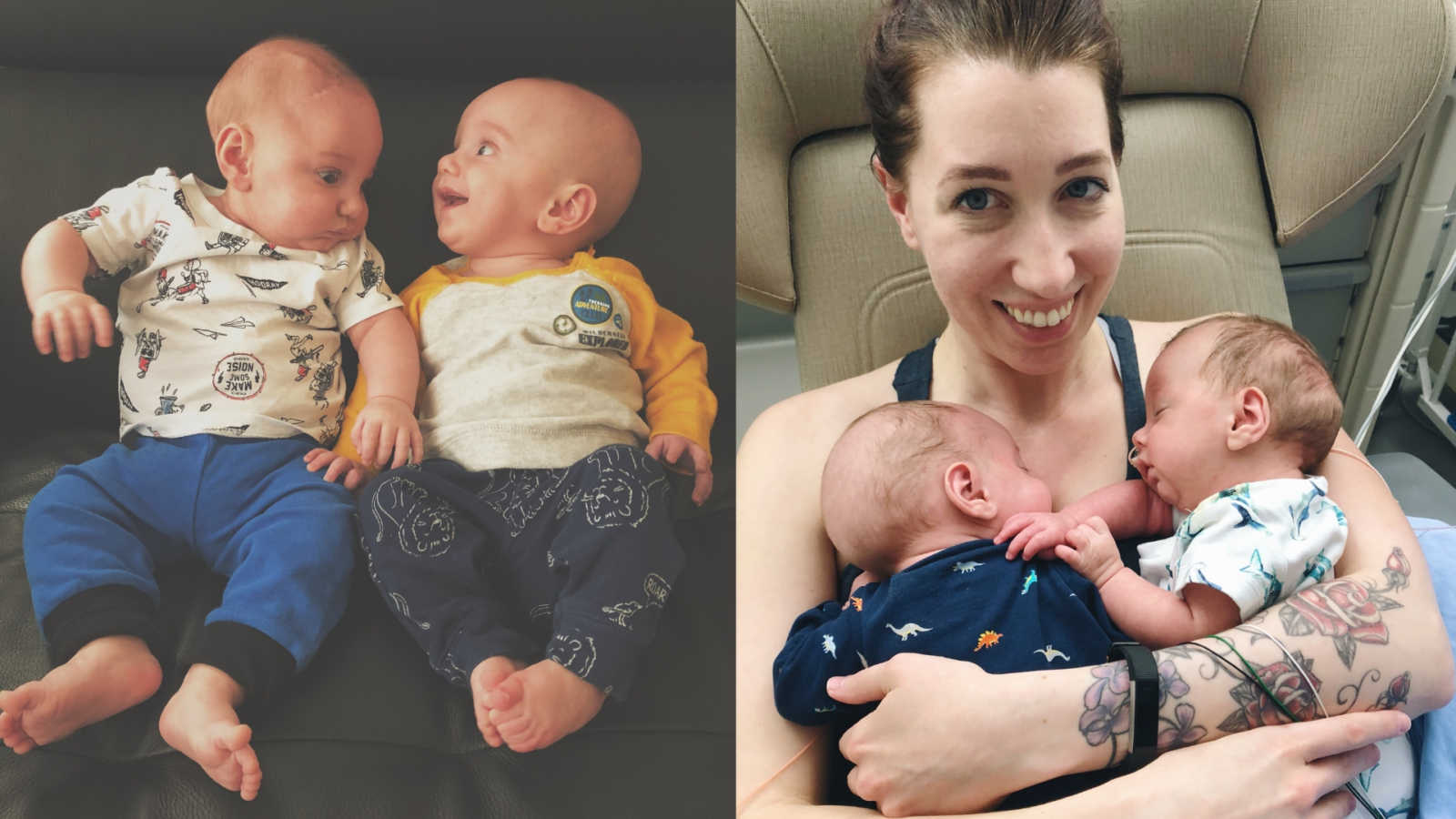“When I found out I was pregnant, only a few weeks along, I was so excited. The problem was, I made a lot of assumptions about my pregnancy as I think we all do. We see pregnancy depicted everywhere as relatively carefree. Sure, some vomiting here and there, but at the end you get a healthy baby. Yay! I assumed complications were rare and they happened to ‘other people.’ These mysterious other people definitely weren’t me.
Little did I know that just 6 months later, I would be sitting in a conference room with 2 NICU doctors, freshly postpartum and dressed in my hospital gown, being asked if we wanted them to ‘do everything they could.’ We were given options for palliative care if we chose not to proceed with trying to save our twins’ lives due to the extent of their massive brain injuries and future prognosis. We were told they may never walk, talk, eat or breathe on their own or have much of a life at all. Yet I have never been so sure of a decision as I was then to choose life for my boys.
Things started simply enough. I had the usual early pregnancy symptoms: nausea, bloating, exhaustion, some cramping. Nothing too terrible. I was looking forward to our first dating ultrasound to hear the baby’s heartbeat. I thought if I just heard their heartbeat, then the rest of the pregnancy would be fine and I wouldn’t have to worry. Ha!
The day arrived. I was 9 weeks along and already having to buy stretchy pants. My husband was with me and we eagerly waited for our names to be called (me a little more eagerly thanks to the full bladder requirement) and followed the tech into the ultrasound room. After she was done, the technician flipped around the monitor so we could see it. She put the thingy on my belly and a small white blob appeared, surrounded by blackness. ‘There’s your baby!’ she said excitedly. My husband and I were both in awe. Amazing!
Before I could register what was happening, the tech swished the thingy to the other side of my belly and slightly down. ‘And there’s the other one!’ she said. Another blob appeared. My husband and I were shocked. I broke out in a huge smile, saying ‘Oh my gosh oh my gosh’ over and over. Somehow, in that moment, I felt like I knew it was twins all along. (And felt better about my rapidly expanding waistline, too.) I’d never seen my husband speechless until that moment. We left there with cute ultrasound photos showing two little blobs – our twins! We went out for lunch and talked the whole time about how crazy this was. I had always joked to my 29-year-old husband we’d have 2 kids before he was 30, thinking it impossible, but here it was, coming true.
I had mono-di twins, which means identical twins who share a placenta. In this type of twins, there is a 10-15% chance of developing a serious condition called Twin to Twin Transfusion Syndrome (TTTS). TTTS occurs randomly in identical twin pregnancies only and it’s basically when the twins share blood flow through the placenta, when that blood flow should be separate. So there is extra monitoring for these types of pregnancies to watch for this condition, which has an 80-100% mortality rate if left untreated and still only a 50-70% survival rate with the most aggressive treatment.
At 16 weeks, I was sent to the highest of high-risk OBs: a maternal fetal medicine (MFM) specialist. I would be receiving ultrasounds every 2 weeks to check for TTTS developing. This is standard care for a mono-di twin pregnancy but sadly many women do not receive this. At 18 weeks, I was back for another scan. By this time, I had ‘popped’ out significantly, looking like I was full-term with a singleton. This is a big warning sign of TTTS, since the shared blood flow causes one twin to not have enough amniotic fluid and the other to have way too much, causing a huge pregnant belly. TTTS can cause significant neurological, cardiac and growth restriction problems.

At that ultrasound, I was classified as Stage 1 TTTS. There are 5 stages, with the last one being death of one or both twins. It is unpredictable, meaning you can stay Stage 1 for weeks or months, or move from Stage 1 to 5 in a matter of days. I was immediately referred to one of only two hospitals in Canada that treat TTTS, over an hour from my house. I remember being terrified, but I assumed everything would end up okay. Again, these sorts of terrible things happened to ‘other people’ and surely not me. I think I was trying to trick my brain into staying positive, unable to fathom the alternative and what that would do to me.
The next 6 weeks would be the scariest. I met with my (life-saving, amazing, wonderful) new MFM at the high-risk hospital and was told all the statistics and scary things that could happen because of the TTTS. I was convinced that wouldn’t be me. I was convinced the poor neurological outcomes, heart problems, or death wouldn’t happen to my boys. I remember her telling me, ‘The statistics only matter if they happen to you.’ How true that ended up being.
I went to the hospital every 2-3 days for a 1-2 hour long ultrasound and some days even longer. I was very closely monitored. The most effective treatment for TTTS is a laser surgery done on the placenta in utero to ‘seal off’ the shared blood connections between the twins. It’s risky and comes with about a 50% survival rate for both twins. My case was even trickier as I had an anterior placenta (makes the surgery more difficult).
I was admitted to the hospital at 21 weeks pregnant for the laser surgery, however the morning of the procedure, I found out we couldn’t go forward as there was no surgical window, or way to get in without harming the babies. I was devastated because I knew that was our best option. Instead, we did the next best thing: 3 amnioreductions – amniotic fluid reductions. These do not treat TTTS or prevent it from worsening, but it relieves pressure from the twin with too much fluid (the ‘recipient’) and also helps prevent preterm labour. I had 5 litres of fluid drained out each time at 23, 25 and 27 weeks. Each time, they stick a really large needle in your abdomen all the way through to the inside of the uterus and suck out the fluid. It takes about an hour in total and yes, it really hurts. Each time I spent the night in the hospital.
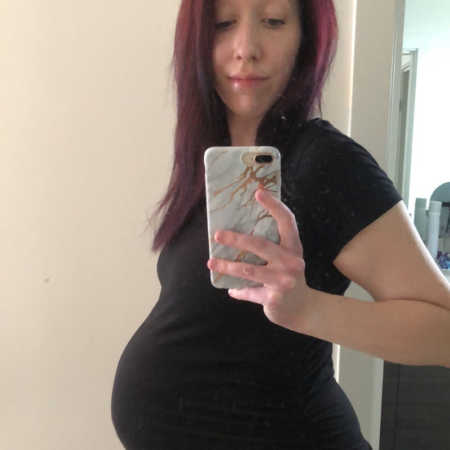
During the 2 months I was monitored prior to delivery, I spent a lot of time alone and at home, worrying and in pain. With this type of pregnancy, there isn’t any joy. I tried to focus on the positive but most days it felt like something bad could happen at any moment. I became scared to go anywhere or do anything in fear of my water breaking too soon from too much walking (which it never did).
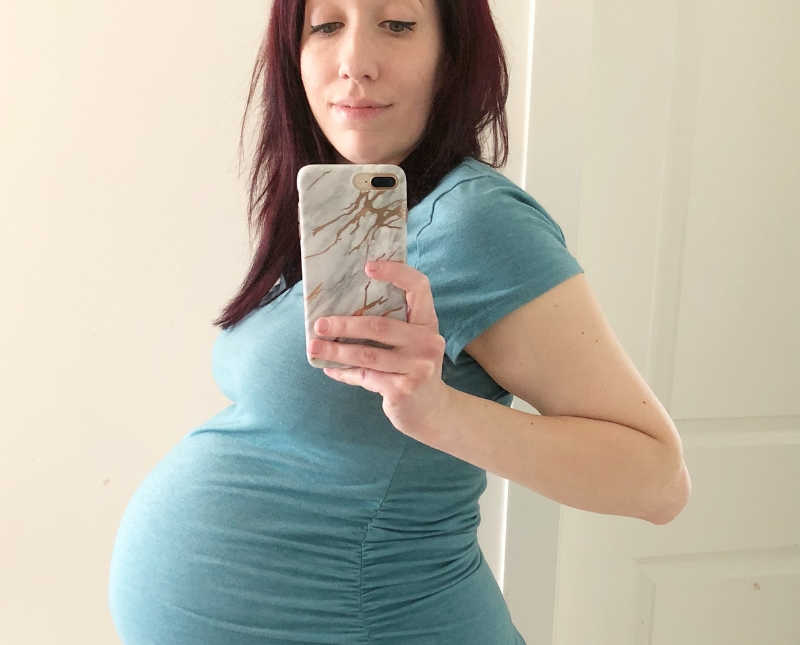
At my third amnioreduction, I was 27 weeks, 2 days pregnant, just shy of the third trimester. After draining the fluid, they did an ultrasound to check on the boys. They discovered Jaxon had fluid building up in his body and was in heart failure. This is Stage 4 TTTS, the one right before death of one or both. I was whisked to an emergency c-section to get them out immediately. It would have been mere hours or maybe a day before he would have passed away otherwise. Axel was born at 1lb 9oz and Jaxon was 2lb 9oz (though much of that was fluid retention). It took 7 and a half minutes to get Jaxon resuscitated, born blue and ‘with no respiratory effort’ as his chart said.
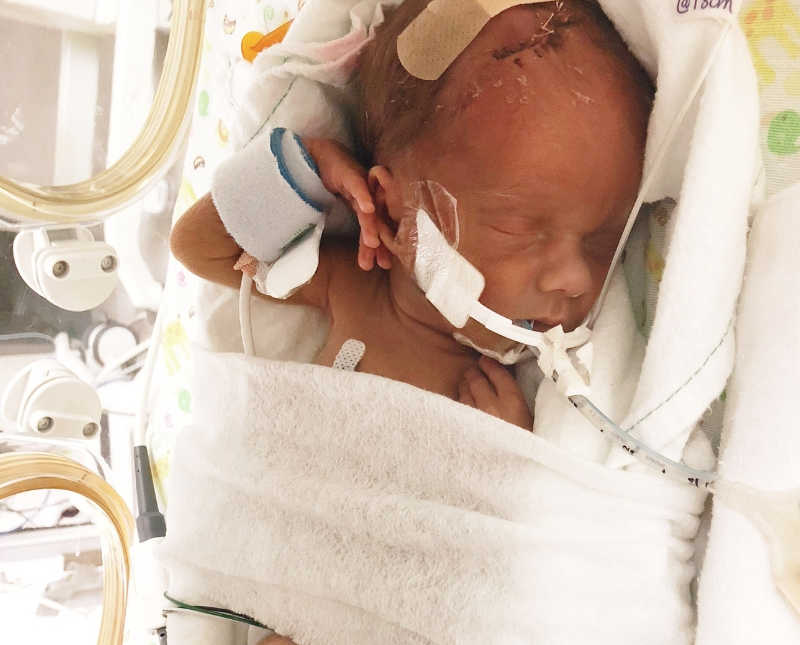
This began our long 4.5 month stay in the NICU. We dealt with blow after blow. We were told they were the sickest babies in the NICU the week they were born, not a great achievement at the highest-risk hospital in our entire province, where all the most critical cases are sent. They didn’t know if they would live past a week, but then they did. They were hooked up to every kind of wire and machine. Jet ventilators to do every part of breathing for them as their lungs were not able to even open on their own. Eyes fused shut. Translucent skin, thin and showing the bones beneath. IVs, blood transfusions, morphine, sedatives and other medicines coming out of needles in every limb. Blue lights on for bilirubin and constant beeps, alarms and code blues, nurses and doctors always in the room in case something were to happen.
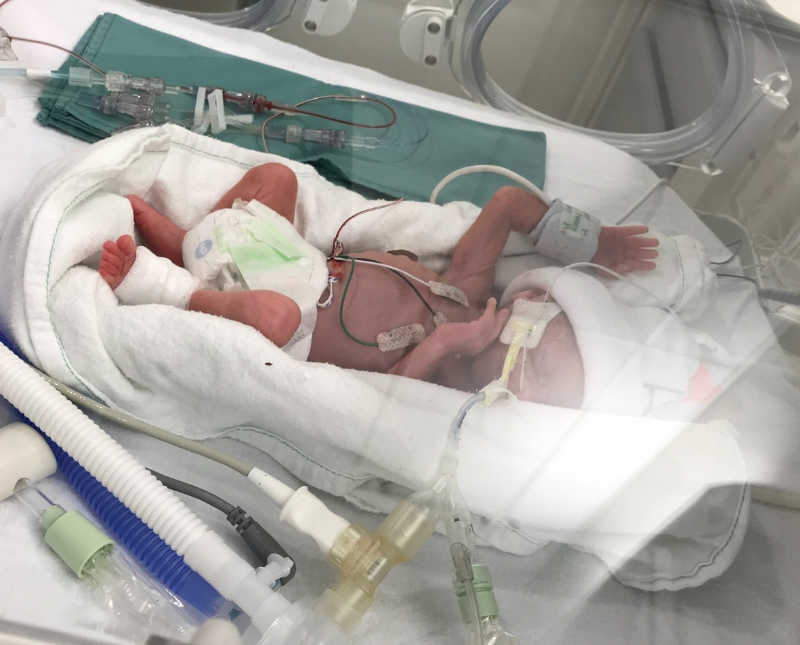
We were told they both had bilateral grade 4 brain bleeds a few days after birth. I had never heard of this before, but it’s the most severe possible. There are grades 1-4, with 4s being closely tied to things like cerebral palsy, epilepsy, hydrocephalus and other neurological problems. Blood spills into the tissue of the brain, destroying areas of it forever. They had many other complications, like chronic lung disease, decimated livers and kidneys, heart damage and more. Axel spent 2 months on the ventilator. Jaxon developed acute hydrocephalus from his brain bleed, which means the brain can no longer get rid of the CSF fluid that’s naturally created there and the brain swells exponentially. Without treatment, it is fatal. The only treatment (in Jaxon’s severe case) was a shunt inserted into the brain to artificially drain out the fluid. He had his first brain surgery at 15 days old, just 29 weeks gestational age, and weighing under 3lbs.
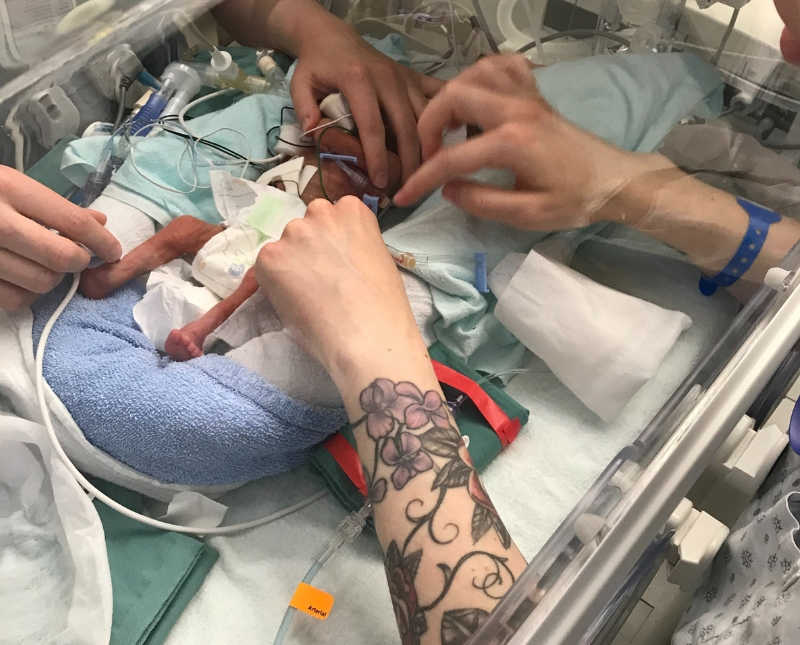
Every day for 50 days, Jaxon had a needle inserted into the temporary shunt in his brain to draw out CSF fluid. Finally after 50 days, he was big enough for a permanent shunt (5lb weight minimum for that surgery). Two weeks later, that shunt would fail and he would undergo his 3rd brain surgery for a new one. All of this before he even hit 3 months old. This period was the hardest as we weren’t sure if it would work to control his hydrocephalus and if he would make it.

Shunts are the highest failing medical device out there, and many people with hydrocephalus require 10 or more surgeries over their lifetimes due to shunt failure. It’s really scary to know that for Jaxon’s whole life, he could be fine one day and on the edge of death the next. Especially as a baby who can’t yet talk, we need to be on constant watch of signs of shunt failure. It’s always at the back of my mind. ‘Is he crying because he’s being a regular baby who cries, or is it because he has a headache from intracranial pressure from a shunt malfunction?’ While all this was going on, Axel developed pneumonia and almost died, both boys developed ROP (an eye disease found in preemies) that required surgery for both of them, and they experienced feeding difficulties due to their brain complications (inability to coordinate movement) and had feeding tubes surgically inserted in their stomachs (G-tubes).
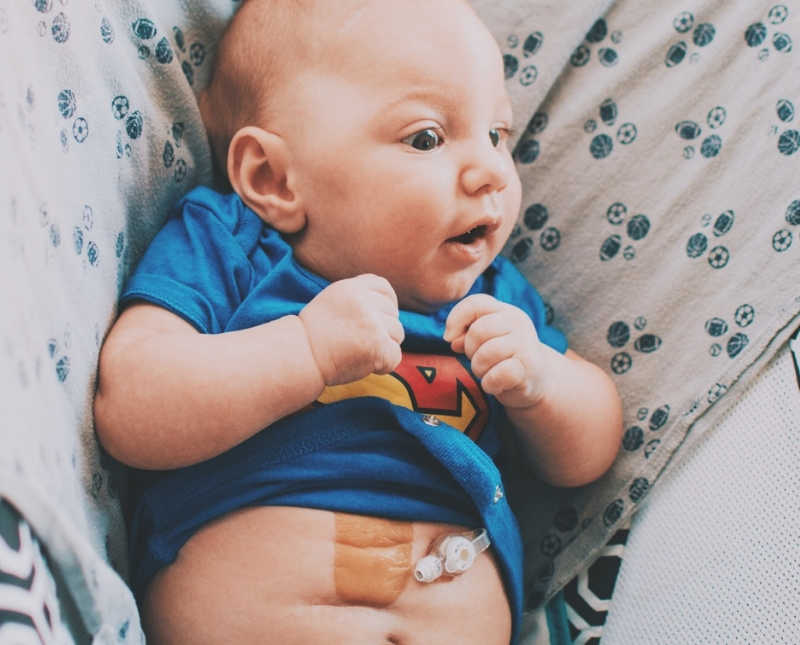
One day we’d be experiencing joy, doing something fun like giving the boys their first bath or the day when Axel finally came off oxygen or we got to hold them for the first time (at 2 weeks old), or many other milestones. Other days, it was doom and gloom as a new problem came up: a seizure, not breathing, an infection, Jaxon has heart problems, kidney cysts, liver damage, the full extent of their brain damage, loss of peripheral vision, anemia… the list goes on. I broke down in tears many days. The joyous days were amazing – the first time we tried breastfeeding, the first time I got to hold them – and the tough days made me question wanting to live, or what the value of my life even was, since my body had failed them so horribly.
It got lonely, too. I spent many days and nights there alone, especially once my husband had to go back to work to pay our bills. Our hospital room was lovely, but spending 12-24 hours a day there every single day for 4.5 months, mostly alone, wears a person down, as does the constant roller coaster of good news then bad news.
The NICU saved their lives and for that I am eternally grateful. But things aren’t just magically fixed now that we’re home.
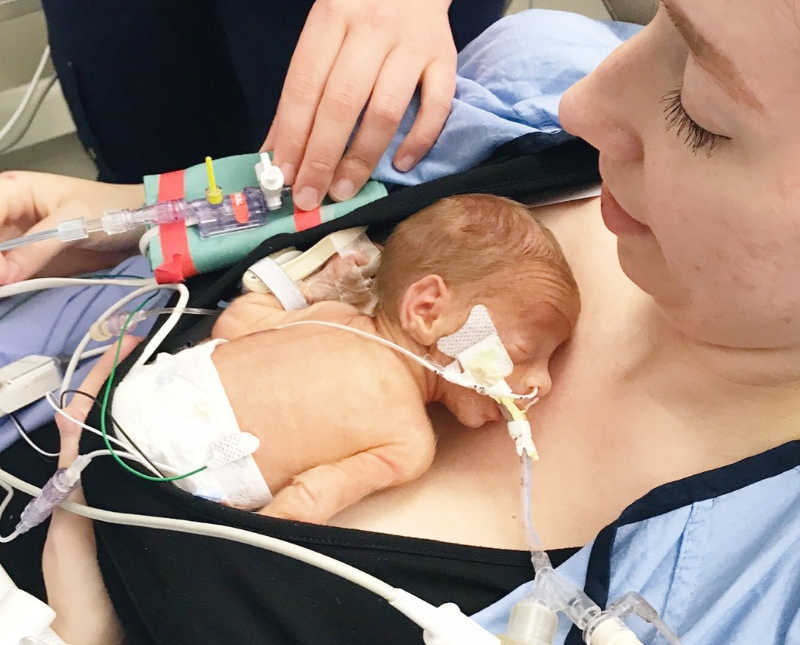
Jaxon will be dependent on the shunt working in his brain forever, until that one stops working and he needs another brain surgery, and then another and so on. Both boys are exhibiting signs of cerebral palsy and they tell me, depending on severity, could mean they’re in wheelchairs for the rest of their lives, or can’t use their arms, or both. There are so many unknowns right now and that is the hardest part to deal with. What will the future look like? I can’t bear to imagine us all walking down the street as a family years from now, because I don’t know if they’ll be walking. Or talking. Or being able to use the bathroom, or eat or even hold a toy.
Our days are very structured and look much different than other people I know. We have to stick to a strict feeding schedule through their feeding tubes, since they can’t tell us when they’re hungry or eat by mouth (though we practice daily). We do hours of physiotherapy to help their muscle tone and potentially lessen the severity of cerebral palsy on their muscles and limbs. We clean and replace feeding tubes and parts, wash syringes and administer medications, carting our feeding pump machines wherever we go. We have physio, occupational and speech therapy weekly, and other specialists and doctors appointments often. We are out at appointments 2-3 full days a week still after being home for 4 months now. It takes an extreme toll, especially when we don’t sleep much at night due to the around the clock feeding schedule (one feed takes 1.5-2 hours to complete).
And, like all preemie families, we must isolate ourselves for cold and flu season, especially this first year while their lungs are still so fragile. Since coming home at the end of September, we have only gone out for Christmas Day, except for our many doctors’ appointments. It is incredibly difficult to live such an isolated life with medically complex children, and a future that is looking bleak, if we are to believe all the doctors. Our twins are behind on their milestones, already pointing to cerebral palsy, but it’s the not having definite answers of what lies ahead that is the most heart-wrenching.
But – our boys make progress every day. They have many signs of disabilities and things their therapists and doctors say, but they also smile from ear to ear. Jaxon may have extreme vision impairment, but he loves music and loves to ‘talk’ with me (babble). They told us to expect to come home on oxygen for Axel, yet he’s been breathing on his own for months. They have big personalities and more determination than many adults I know.
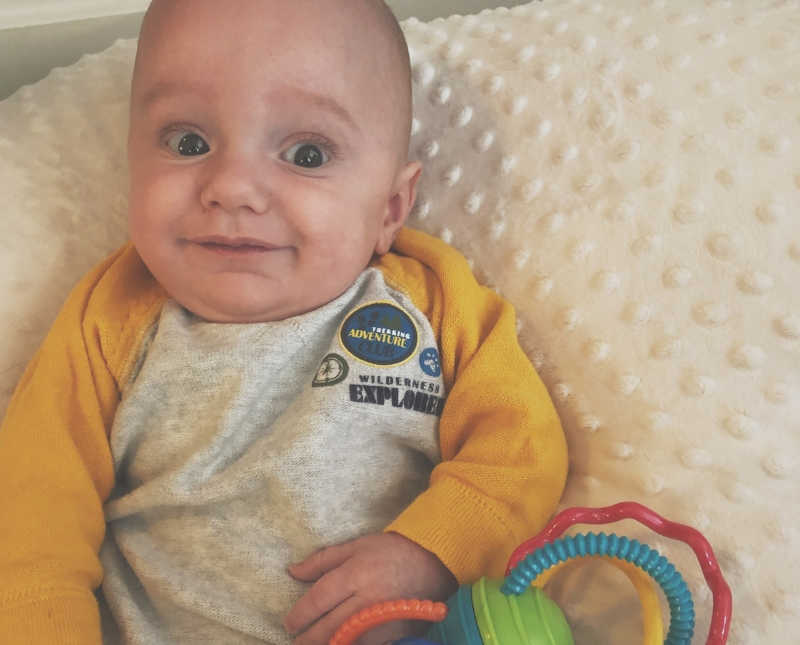
Some days of no sleep, cranky twins and the medical issues (and costs) we face is enough to make me want to stay in bed forever. But I get up every day, because they need me. Because they deserve the very best after what they’ve been through in life. My husband and I will always do everything we can to help them and love them unconditionally.

This whole experience has changed me forever. I will never be the same person. I value simple things more, like a good cup of coffee. I value significant things less, like jobs or what car I drive or where we live. I know what’s important in life now and I don’t think I would feel the same way if I had a healthy, full-term pregnancy and healthy children. They are my greatest teachers and I learn from them every day as I watch them endure surgeries and try so hard at simple skills other babies do effortlessly like eating. They’ve shown me what it means to make the most of the cards you’ve been dealt. They are true miracles to have even survived and I can’t wait to watch my boys take on the world, whatever the future holds.”

This story was submitted to Love What Matters by Michelle Martin of Vancouver, BC, Canada. Follow her journey on Instagram. Be sure to subscribe to our free email newsletter for our best stories.
SHARE this story on Facebook or Twitter to support moms battling complications with pregnancy.

